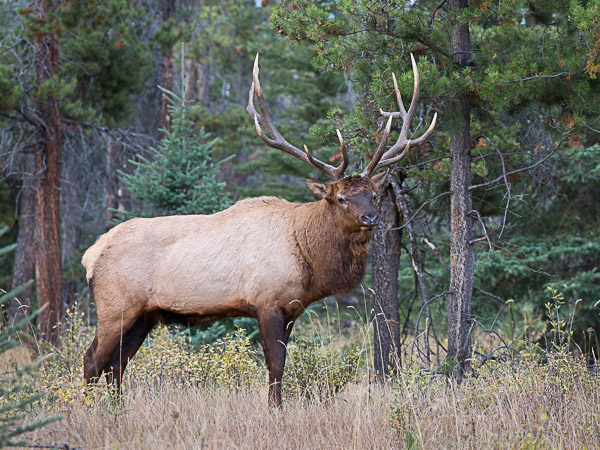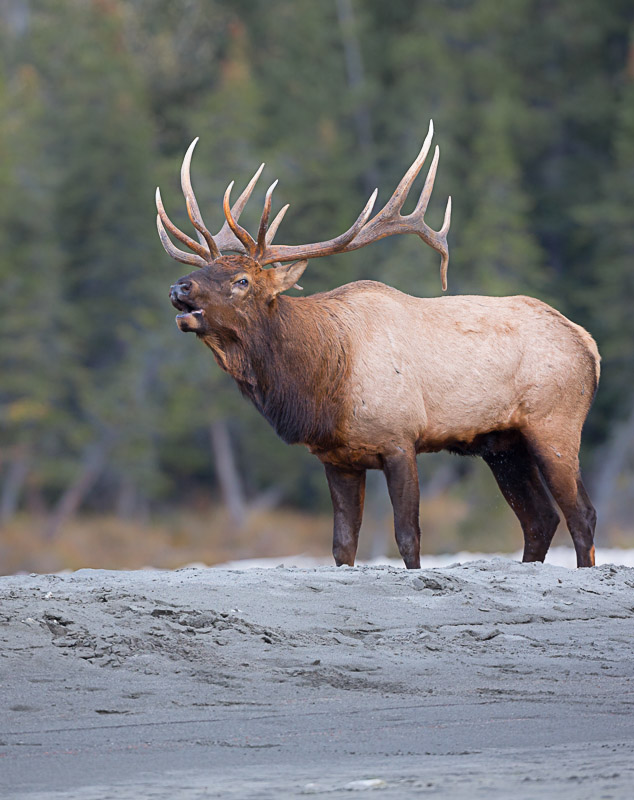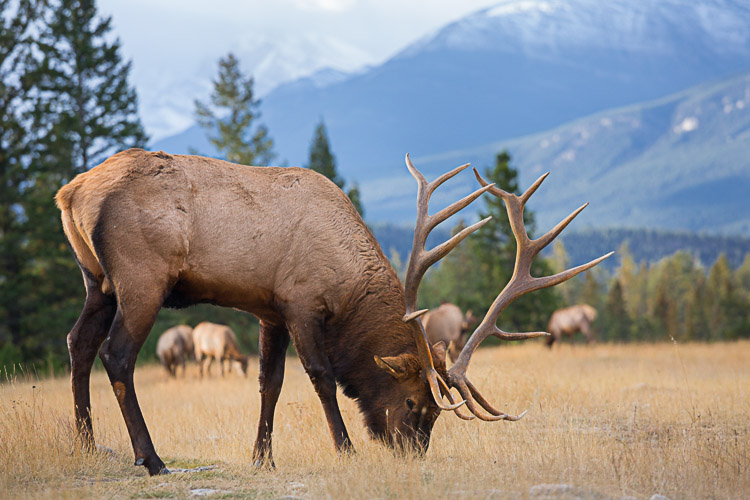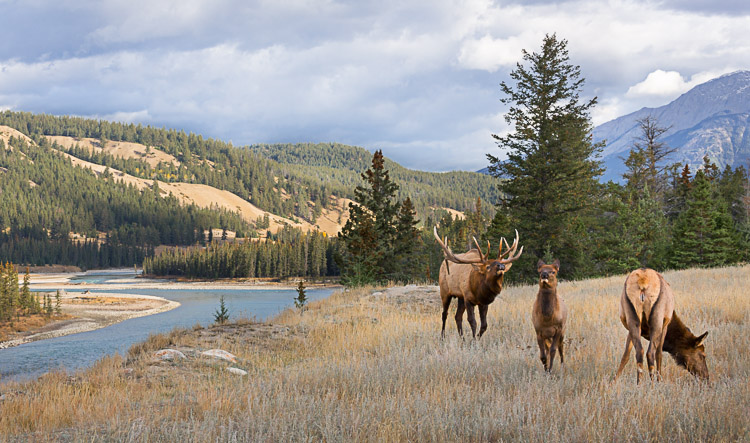Photographing elk is much like other wildlife photography, in that background is often key.

Early in October I was in Jasper National Park, Alberta, waiting for the weather to break for a planned kayak paddle of Maligne Lake. While I waited I met a friend, Norm Dougan, by coincidence, and for two days he graciously showed me the Jasper-area bull elk. We stayed in Whistler campground.
Before dawn each morning, Norm drove over and picked me up, and, fueled by coffee and the excitement of the elk rut, we patrolled the roads around Jasper looking in earnest for big bulls. Norm — an ex-hunting guide — quickly located worthy subjects, pointed out antler symmetry (“nice, symmetrical 7×7”) that would have escaped me, and got us positioned to take best advantage of ephemeral situations.

Photographers migrate to Jasper to photograph elk for good reason. The resident elk population are acclimated to people, not hunted, not likely to run off with a zigzag approach. For backdrop, we have the breath-taking Canadian Rockies. And then the elk antlers here average the biggest on the continent. The challenge is to make the most of these advantages.
By early October, most pros had moved on. The remaining photographers, only a half-dozen or so, for the most part bunched together. I noticed Norm moving about a lot, seeking better angles, anticipating movement, looking for background that can separate the killer shot from the throw-away. I did the same, much more so the second day than the first. My advice for photographing elk: stay safe, get low, anticipate movement, keep thinking and pick your backgrounds — don’t let the elk pick the background for you.

When the herd moved up the bank to higher ground, we followed. Most of the photographers stayed between the road and the herd, with Pyramid Peak for a backdrop. The problem was Pyramid was a dull gray, enshrouded in clouds. I saw Norm move around to position Edith Cavel, a peak to the west, behind the elk. I did the same, and got low in a seated position to capture the bull with some cows feeding underneath him, a favorite shot from the shoot.

Thanks for the helpful tips. We so admire your work for San Juan Preservation Trust that I decided to see morre of what you do on line. I’m well rewarded for my effort.
Thanks, Cynthia. I admire you for your work at the Trust.
Gary